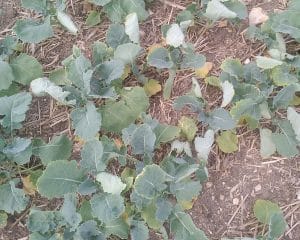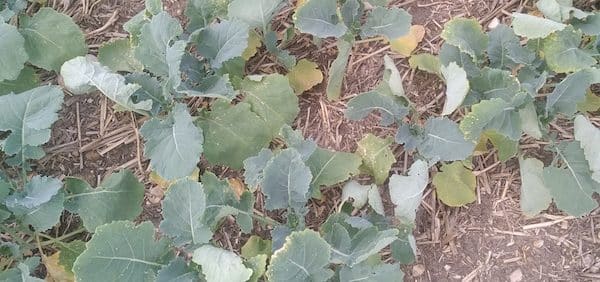By Angela Brackenreed
With a surplus of moisture coming into the 2017 growing season, growers in Manitoba pulled off some massive canola and wheat crops in what were drought-like conditions. Going into this past winter, we had about half the available moisture that we did the fall before (150-225 mm at the 0-120 cm depth, versus 300-375 mm in 2016) and snowfall was below normal in a lot of areas. In southern Manitoba, we’ve now started 2018 with above normal temperatures and rain only really coming in limited, spotty thunderstorms.

I’ve been watching closely a field in the Neepawa area. It was seeded May 14, and so far, has received less than 2″ of rain. According to Environment Canada, normal at the Neepawa station from 1981 to 2010 is about 6.8″ from April to the end of June. Average day time high in the area this year was 23°C in May and 25°C so far in June; normals are around 18 and 23, respectively.
This field last year produced about 70 bu./ac. of spring wheat. In total, precipitation in the 2017 growing season was about 7″.
What does this all mean for this 2018 canola crop? The crop is cabbaging out now, and in bud to very early bolting stage. In spots, it is starting to show signs of moisture stress with blue waxy leaves and some wilting. Fortunately, this crop (and most in Manitoba) is not yet flowering, the stage where excessive heat and drought stress is likely to have the biggest negative impact on seed production.
Evaporative loss would have been fairly high on this field up until now, with fairly good ground cover at this point.
How much moisture a canola crop needs to produce a bushel of seed depends on the soil type, evapotranspiration potential, genetics and myriad other factors. A very rough number to use as an estimate is 3.5-4.0 bushels of seed for every inch of moisture.
Using the Brown soil moisture probe method, you can estimate the plant-available moisture in a field. Manitoba Agriculture explains this method well here and also provides charts to correlate plant available moisture using depth of moist soil and soil texture.
Based on this, the crop in Neepawa right now has somewhere around 1.2″ to 3.7″ of plant-available moisture.
We have a lot of time to receive rainfall and produce a crop, and dry conditions will help to limit disease. There is no denying though that we need a decent supply of moisture soon to pull off the yields we’ve come to expect out of our annual crops here in Southern Manitoba.

